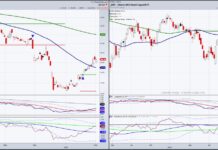The old adage about investing is that you should buy low and sell high. And that is sage advice.
Heck, everyone wants to buy low and sell high. But the question is how do you put that goal into practice?
This may sound simplistic, but in order to buy low you first have to sell high!
The S&P 500 set all-time highs this last July. So, does that mean that you should sell now and move to cash and/or US Treasury bonds and wait for the market to correct?
In 2000, the market hit an all-time high and declined soon after 46%. In hindsight, any time between March and September of 2000 would have been a great time to sell all of your stocks and move to cash. Those that did would have maintained their account balance while those that didn’t sell likely saw great losses. It goes without saying that those that didn’t sell their stocks and instead held through that crash missed their chance to sell high.
Some sold a little bit, some sold a lot. Some sold lower, while some likely got out of the market and never got back in. Those that stayed in had to wait a long time to see their account balance recover—in fact it took them until 2007 for the S&P 500 to get back to where it was in 2000. If averaging in (via 401K or other method), it probably took less time but you get the picture.
On the other hand, those that got out could have bought back in anytime at lower prices and would have seen their wealth increase almost 50% if they held into 2007. That’s when we hit all-time highs again. That was another opportunity for those that missed getting out in 2000 to learn from their mistakes and get out again. The problem is that the market had been going up pretty steady for almost 5 years without a serious correction. And there was every indication that it could do so for a few more years. And virtually all the experts on TV were saying that everything was great! (Sound familiar?)
Thinking the party would continue longer, very few investors took advantage of their opportunity to sell at all time highs. Most of those investors that failed to get some of their money out of stocks early probably ended up losing a big portion of their wealth…again. Being all in and all out isn’t necessarily a fair assessment of how this works, but having a risk management process so you can take some money out and buy back lower is realistic. Or if nearing retirement, just move some money out.
Remember, you can’t buy low unless you first sell high.
Interestingly, the S&P 500 (and other stock market indexes) didn’t suddenly crash without warning. In the crash of 2000, the S&P 500 had an 8-10% correction in January and February. Then it powered back to an all time high in March of 2000. Then it quickly dropped 12% again in a matter of a few weeks. It moved back up within a few points of the all-time high again in early September. Then it started to drift down…and down until it finally hit bottom in 2003. Then the terrorist attack on 9/11/2001 accelerated the decline, but it had already fallen 30% before then.
In other words, investors had several opportunities to get some money out over a period of months to mitigate future significant losses.
Investors had a similar opportunity to get out near the all-time highs again in 2007. The S&P 500 hit an all time high in November and started to drift down. The market had been moving up without significant correction for almost 5 years. Those that moved to cash anytime in 2007 or the first quarter of 2008 would have spared themselves the emotional turmoil of another roughly 50% decline that followed.
continue reading on the next page…








